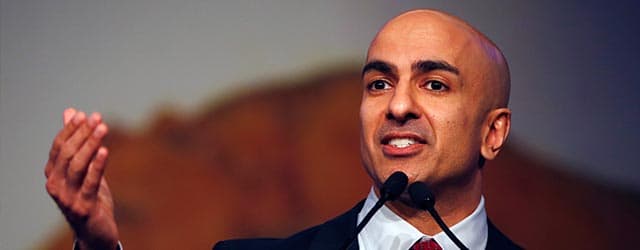US: At 42, he is a former banker, a former bailout czar and a former politician. He wants to persuade the public, from Wall Street to Main Street, that large banks pose a risk to the economic system.The risk is too high, he says, and must be eliminated—surely not a minor feat, not even for one of the presidents of the mighty Federal Reserve.

Named president and CEO of the Minneapolis Federal Reserve in January 2016, Neel Kashkari wasted no time: In a speech in February that sounded like a declaration of war, he spoke publicly about why he thinks big banks should no longer exist. His statement resonated front and center in American politics.
“Seven years after the crisis, I believe it is now time to move forward and end TBTF (too big to fail),” Kashkari told his audience in Washington, DC. He listed some possible solutions: breaking up large banks into smaller and less connected entities, turning large banks into public utilities by forcing them to hold so much capital that they would be virtually unable to fail (“with regulation akin to that of a nuclear power plant”), or taxing leverage to reduce systemic risks. More on these possible solutions will be presented in the coming months when the Federal Reserve of Minneapolis, the smallest for its population in the 12-member Federal Reserve System, unveils a plan on how to put an end to TBTF.
To reinforce the message, Kashkari has been on a media offensive. In April he held a high-profile symposium on “ending too big to fail” in downtown Minneapolis. He responds to his critics with invitations to come and discuss the risk that large banks pose to the economy in general and to taxpayers in particular.
Weathered by his experience at the US Treasury, where, in 2008, in the full swing of the financial crisis, he was overseeing the Troubled Assets Relief Program (TARP), Kashkari is convinced he’s got strong arguments.
A native of Stow, Ohio, Kashkari is an engineer by training. After earning an MBA from Wharton, he worked for Goldman Sachs in San Francisco on financing in the tech sector. In 2006 he followed Henry Paulson, then CEO of Goldman Sachs, from the bank to the US Treasury. In 2014 he made a failed run for the Republican nomination of California governor. He lost to Jerry Brown, foiling, at least temporarily, his political ambitions. But he’s far from quiescent, and his presence may become increasingly relevant in the future.



